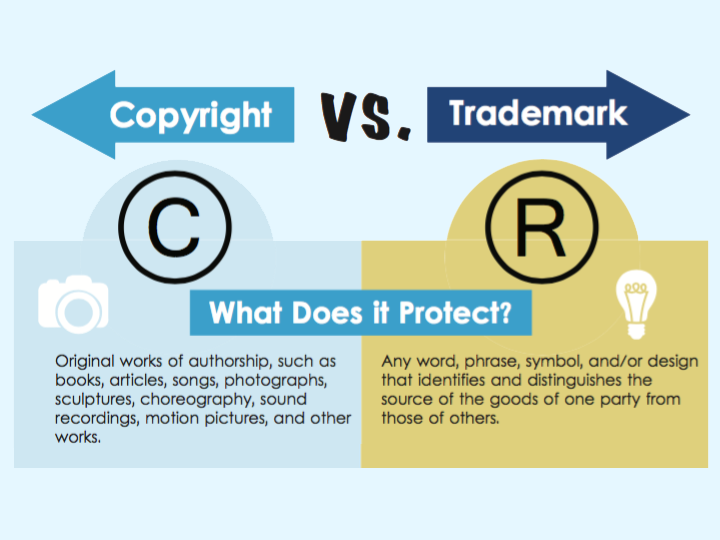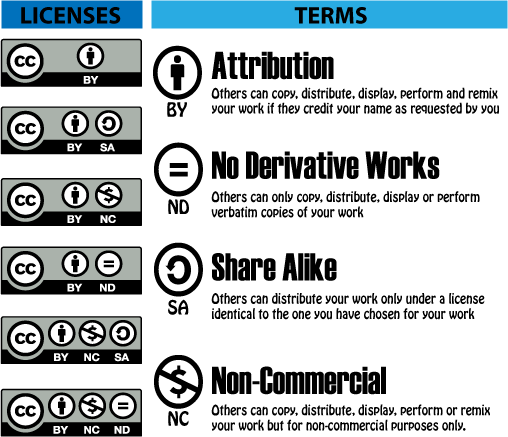

Posted by AllDayShirts on to Printing Business Tips
Did you know that you can't use just any design you like when you're designing a T-shirt for your T-shirt design business? If you aren't careful, you could end up coming across some copyright problems, which could get you in hot water.
How do you know that you can be successful in the shirt design business while still being ethical and following T-shirt design copyright laws?
That's what we’ll review in this article.
Finally, you can work in the T-shirt design industry and know that you’re following all the laws related to copyright... well, to a T. Read on to learn more.

Source: copyrightalliance.org
When it comes to following these types of laws before designing your T-shirt, it’s important to understand how copyright and basic concepts such as trademark, public domain, creative commons, and fair use work. We’ll review these now.
The US put into place its first copyright law back in 1790 when our country was only 14 years old. This law was rewritten much later, in 1976, and it had a recent amendment in 2016. This law, which is now 370 pages long, defends intellectual property rights.
The main idea of the law is that anytime someone creates a work, they can defend its monetary value. That way, if someone uses what they’ve created, they’ll be paid for it.
While there are many elements of copyright law (you can check out the full, lengthy version here), one of the main elements you should think about when it comes to t-shirt design is that things that have the potential of being copyrighted include:
Additionally, audiovisual and film, architectural works, and sound recordings can be copyrighted. Note that even though this doesn’t appear in the law explicitly, memes are definitely intellectual property. So if you’re using one, find out who owns it and get the permission needed to use it.
Also, note that the law says that the discovery, principle, concept, method of operation, system, process, procedure, or idea involved in the work’s creation isn’t copyrighted. So you can use an artist’s methodology; you can’t use their finished product.
So you could create a T-shirt design that involves an artist’s style or look, as long as you aren’t stealing the image itself.
Another concept related to shirt design copyright is the trademark. The concept is similar to copyright, but the protection here is specifically for an image, symbol, or name that represents a company or product. Some examples of trademarks include:
Characters from film and TV can be trademarked, and sometimes even celebrities will register their own names as trademarks. Trademarks must be recognizable, associated with the company they’re related to, or the person who owns that company.
Additionally, trademarks are expensive to register and can be revoked if misused. For this reason, if you use a trademarked item, it’s likely a claim will be made against you, even if it would otherwise not be a big deal to them.
In the copyright law we covered earlier, there appears in Chapter 13 information about the lifespan of a work’s copyright. When it comes to any work created after January 1, 1978, the copyright ends 70 years after the date the creator died.
After this, the work will enter the public domain. Once it’s there, you can do nearly anything with it.
There’s an exception to this, which is if you collect a large number of the artist’s works and compile them.
There’s something called a “collective work” copyright, and these works compiled together would be protected by this copyright.
You can learn more about this type of copyright from the Stanford Libraries.
Another concept that’s important for you to be aware of when it comes to how to design a T-shirt ethically is the Creative Commons license. When artists release their works under this license, they’re allowing others to use the works within their own creations.
However, the people who re-use the work are required to follow the original artist’s instructions.
For example, you might be allowed to use an image, even sell a T-shirt with it on it, as long as you don’t alter it. Some artists might not have any restrictions like this in their instructions.
So when you’re using an image that’s under the Creative Commons license, you should make sure you check what the instructions are and follow them if there are any.

Source: http://education-copyright.org/creative-commons/
Keep in mind as well that the original artist can revoke the Creative Commons license at any time, at which point you wouldn’t be able to use the image anymore. While this is rare, it’s important to be aware that it can happen.
The last concept we’ll cover in this section is fair use. Fair use applies to a circumstance in which you’re using the intellectual property that belongs to someone else without putting yourself at risk. It’s all about how you use the material.
For example, you can use short passages of a text as long as you include citations and it’s relevant to what you’re saying. Even in this case, there’s a limit to how much fair use laws cover in terms of how much text you use.
Another example of fair use is a parody. However, you want to make sure it’s clear that you’ve created a parody of a work.
Note that fair use rights can be difficult to defend if you’re making a profit, so this might not be the best defense if you’re making money from T-shirts you sell with someone else’s work on them.
If you use a copyrighted work without the permission of the original artist, they could sue you and seek punitive damages. They can do this for each unauthorized use. So if you sell 10 T-shirts with their design, you could be sued 10 times.
Statutory damages can be quite high, and in the case when willful infringement has occurred, they can be as much as $150,000 per work.
In terms of criminal penalties, this will happen if there is willful infringement (for example, you attempt to circumvent digital tools that were put into place to protect the creative work).
In this case, you could end up in prison, and this would be for a length of time of up to 180 days and in addition to financial penalties.
If you were to repeat copyright infringement, you could end up with increased prison sentences and financial penalties.
Finally, there are reputational consequences. People might stop buying your T-shirt designs if you're exposed for being a T-shirt designer who violates copyright- or copyright-related laws.
Here are some of the DOs for ensuring that you don’t get in trouble for copyright infringement when you’re creating your T-shirt designs
As for the DONT’s:
Now that you’ve learned about t-shirt design copyright laws, you might want to learn about where you can buy the best blank t-shirts.
At AllDayShirts, we sell all types of t-shirts that you can use to print your t-shirt designs.